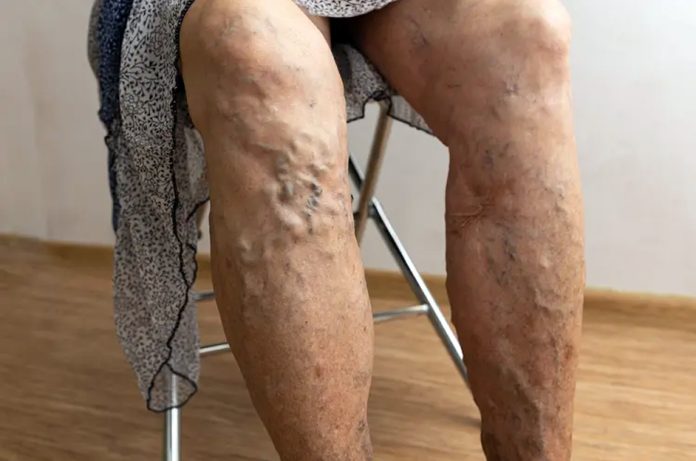The veins in your legs carry blood back up to your heart. They have one-way valves that keep blood from flowing back downward. When you have chronic venous insufficiency (CVI), these valves can’t close completely. As a result, some of the blood goes back down into your legs and pools in the veins there. CVI can also keep your leg muscles from pumping enough blood back toward your heart. It sometimes results in vein blockages, too.
CVI can affect all the types of veins in your legs. This includes:
- Deep veins. These are the large veins found deep in your body.
- Superficial veins. They’re close to your skin’s surface. You can often see these veins.
- Perforating veins. These veins connect deep and superficial veins.
Over time, CVI can cause pain, swelling, varicose veins, and skin changes in your legs. It may also lead to open sores called ulcers on your legs.
How common is chronic venous insufficiency?
It’s a fairly common condition in older people. In the U.S., more than 11 million men and 22 million women ages 40- 80 have varicose veins, while over 2 million people have advanced CVI. More than 20,000 people are diagnosed with ulcers due to CVI each year.
CVI and post-thrombotic syndrome both involve damage to your leg veins. But post-thrombotic syndrome is a specific type of CVI. It’s caused by deep vein thrombosis (DVT), which is a blood clot that develops in one of your deep veins. Even after the clot goes away, it can leave behind scar tissue that harms the vein.
Chronic Venous Insufficiency Causes
A blood clot in a deep vein in your leg can damage a valve there. Lack of exercise can cause CVI, too. So can sitting or standing for long stretches of time. That raises blood pressure in your veins and may weaken the valves.
The causes of valve damage can be:
- Congenital. This means you’re born with problems in your leg veins.
- Primary. Your leg veins change, and they don’t work the way they should.
- Secondary. Medical conditions, such as DVT, damage your leg veins.
Women are more likely than men to get CVI and have vein problems. In fact, those assigned female at birth (AFAB) are nearly twice as likely to have varicose veins (twisted, enlarged veins close to the surface of the skin). Some research suggests that the higher rates of CVI in people AFAB may be due to changes that happen in pregnancy.
CVI can run in families, so you’re more likely to get it if other close family members have had it. Your chances are also higher if you:
- Have obesity
- Are over 50
- Are pregnant, or have been pregnant more than once
- Previously had a deep vein blood clot
- Smoke
- Have a job that keeps you on your feet for long stretches of time
Chronic Venous Insufficiency Symptoms
You may notice these symptoms in your legs:
- Swelling or heaviness, especially in the lower leg and ankle
- A dull ache or cramping in the legs
- Tingling or burning in your legs
- Pain that gets worse when you stand or gets better when you put your legs up
- Itchiness
- Varicose veins
- Chronic venous insufficiency skin changes, which may include skin that’s irritated, cracked, discolored, flaky, or weepy, or that looks like leather
- Without treatment, the pressure and swelling will burst the tiny blood vessels in your legs called capillaries. That could turn fair skin reddish-brown, especially near the ankles. This can lead to swelling and ulcers. It’s hard for these ulcers to heal. They are also likely to get infected, which can cause more problems.
- If you have any symptoms of CVI, talk to your doctor. The sooner you treat it, the less likely you are to get ulcers.
Stages of Chronic Venous Insufficiency
To classify venous disorders, doctors use these stages:
Stage 0. You have no signs that can be seen or felt. But you may have some symptoms, such as achy or tired legs.
Stage 1. You have visible blood vessels, including spider veins.
Stage 2. You have varicose veins, twisted and enlarged superficial veins that are at least 3 millimeters wide when you’re standing up.
Stage 3. You have swelling but no skin changes.
Stage 4. You notice changes to your skin’s color or texture.
Stage 5. You have a healed ulcer.
Stage 6. You have an active ulcer.
Credit: webmd









